Winter doesn’t have to be the bare-branch season that comes to mind. Quite a few winter-blooming shrubs boast magnificent flowers sure to cure anyone’s winter blues. Consider adding these to your garden to liven things up during the dreary winter season.
1. Hellebores

These are commonly called “
Christmas roses
” since they bloom around December.
©Lflorot/Shutterstock.com
Many different colors can be seen in hellebores. These plants are hardy in plenty of zones, from zones 3-8. You can keep them planted outside and expect this perennial shrub to come back the following December. Additionally, their evergreen leaves will give you some ground coverage throughout the year.
2. Camellia
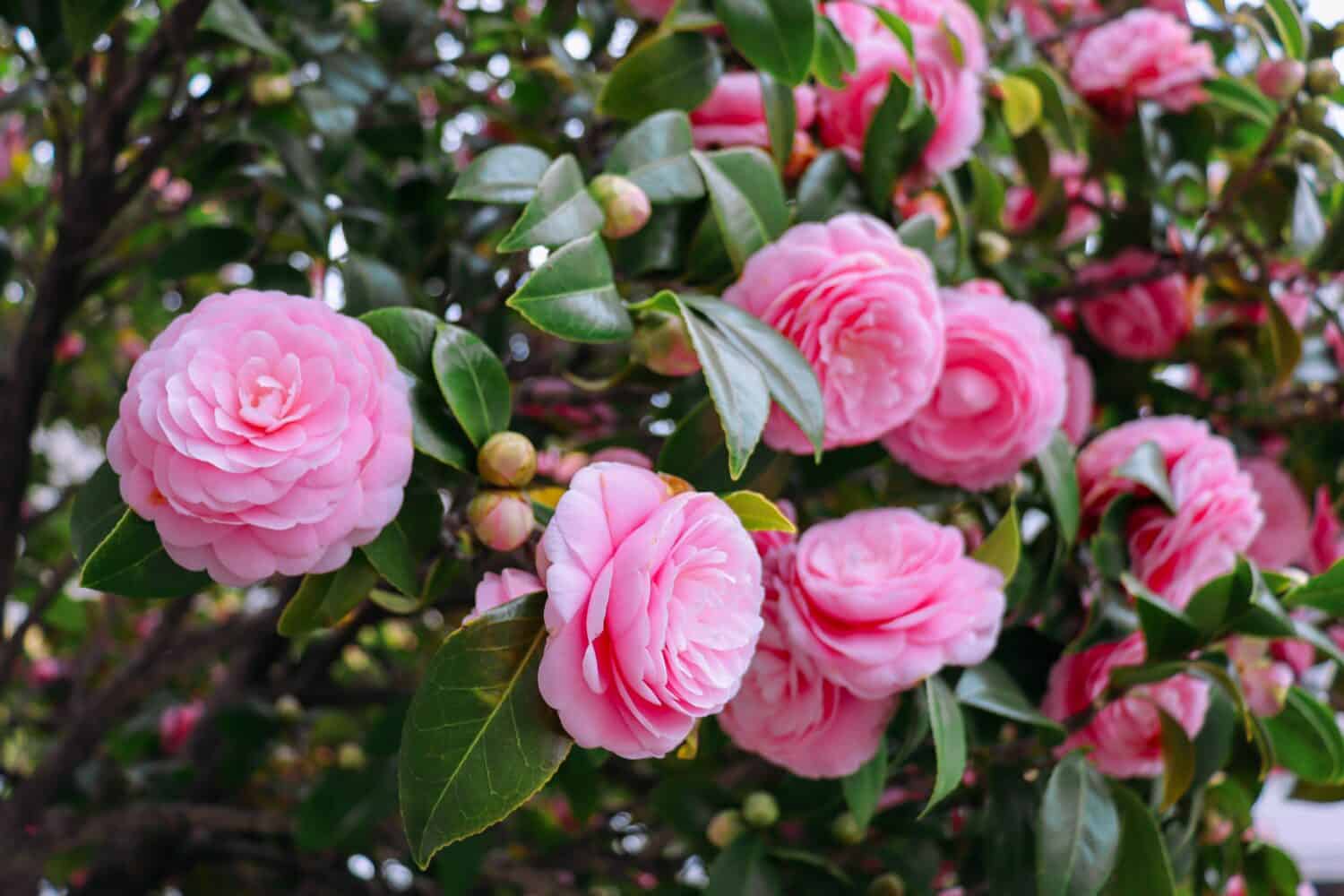
Their radially symmetric flowers can be a hypnotizing sight, especially in the dead of winter.
©Alina_Miyazaki/Shutterstock.com
Most late-blooming Camellia japonica varieties bloom from December through March. Not only is this plant beautiful, but it also gives pollinators some much-needed energy through the winter months. Unsurprisingly, a winter blooming shrub this gorgeous has a small range. Those in zones 8-10 are lucky enough to grow them outdoors with little to no issue.
3. Winter Jasmine
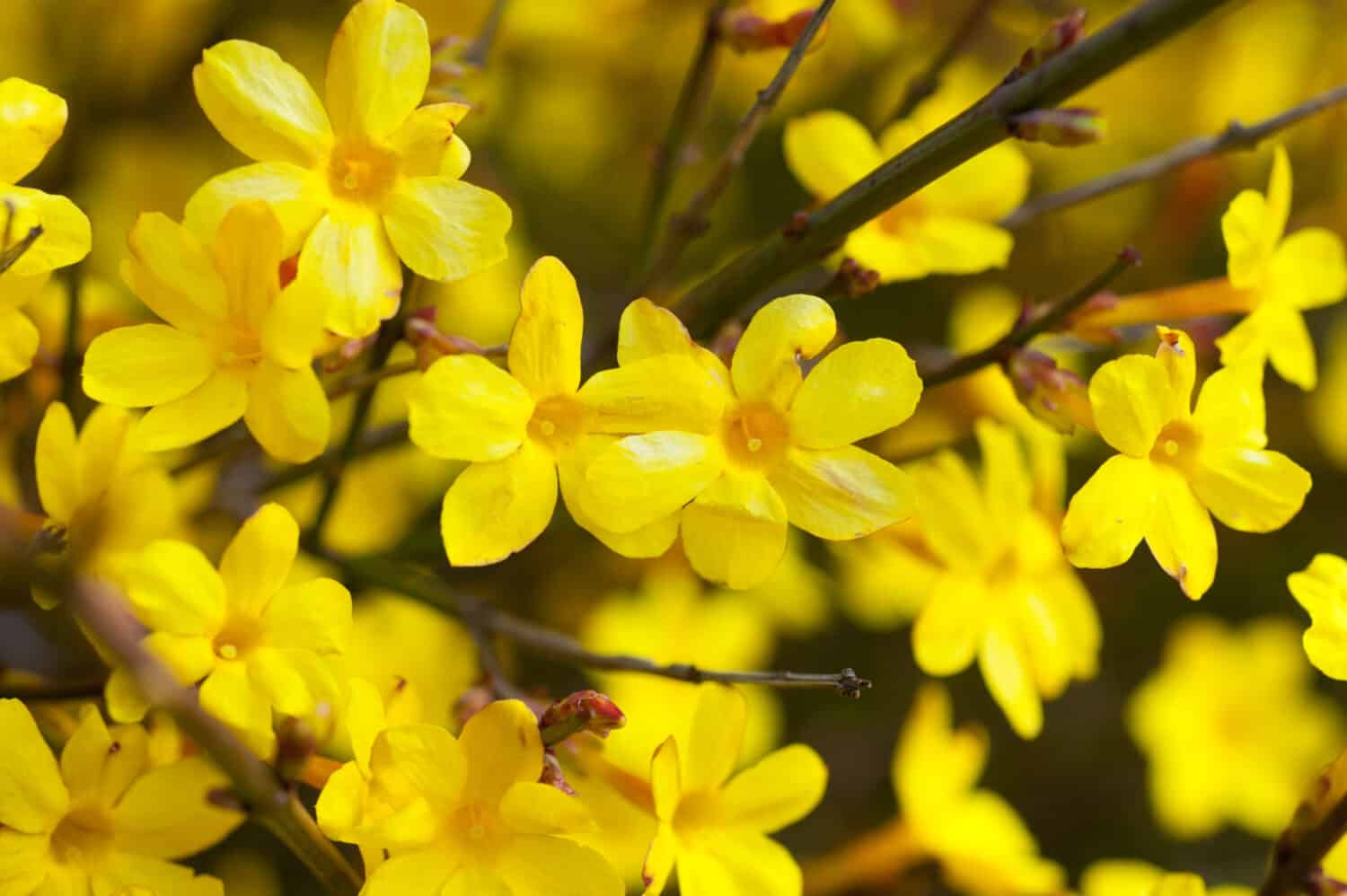
You can grow this variety of jasmine as a shrub or allow it to embrace a vining growth habit.
©freya-photographer/Shutterstock.com
The bright yellow flowers of winter jasmine (Jasminum nudiflorum) can make you forget what season it is. Unlike most other jasmine species, this one does not have a scent. But the brightness it brings is more than enough to make up for its lack of fragrance. If you’d like to grow this shrub, you’re best doing so in USDA zones 6-10. It can tolerate a fair amount of shade but thrives in full sun.
4. Winter Honeysuckle
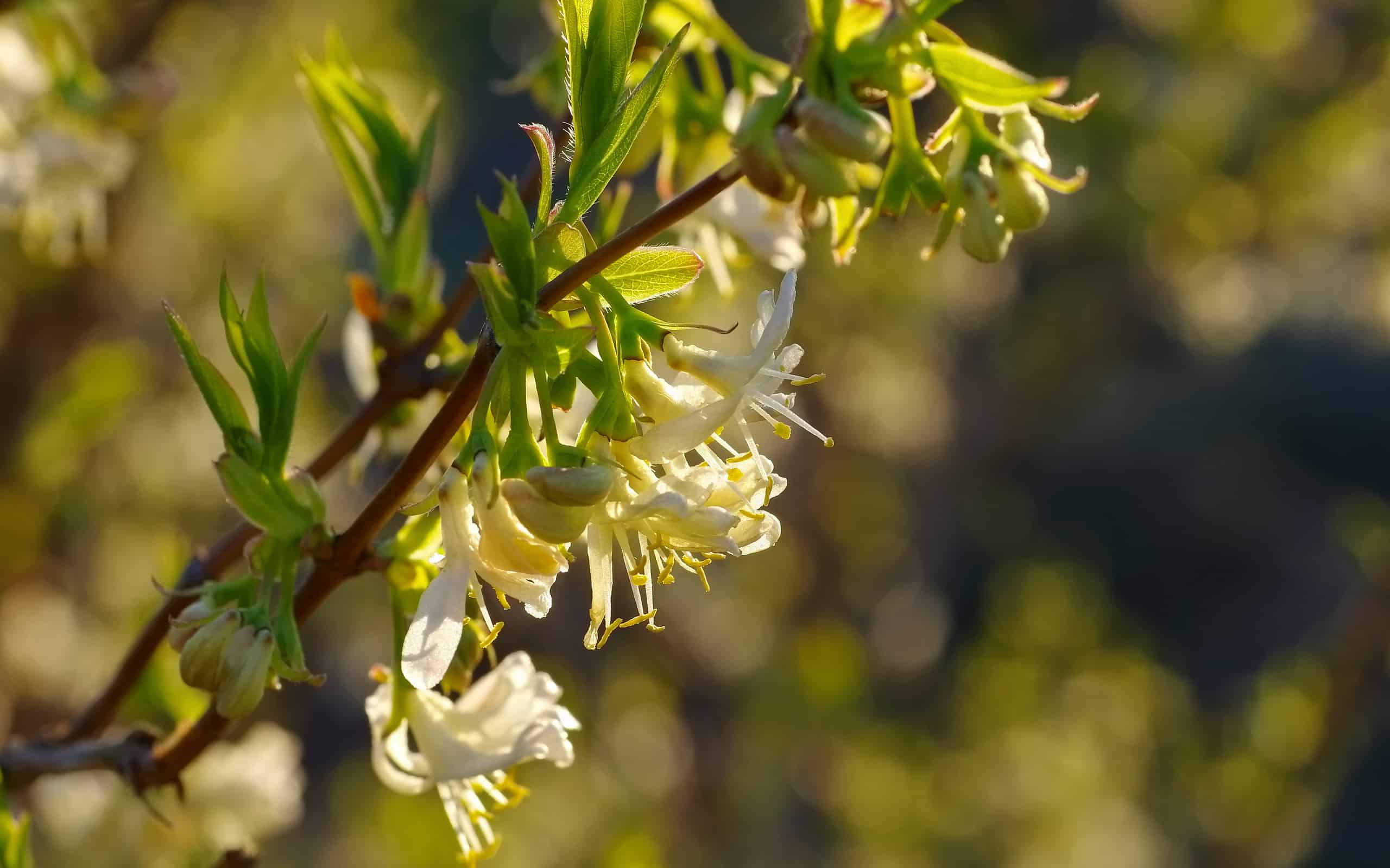
Though it’s a beautiful plant,
it is invasive in a few areas
. Check your state before planting.
©LianeM/ via Getty Images
This species of honeysuckle, Lonicera fragrantissima, is also called “January Jasmine” for its flowering period and fragrance reminiscent of jasmine plants. It grows easily in zones 4-8. In these zones, flowering occurs between December and March. When it fruits, the red berries are good sources of food for birds and small mammals.
5. Daphne

The light pink petals against the dark green foliage provide a stunning winter contrast.
©High Mountain/Shutterstock.com
Winter daphne is a beautiful winter-blooming shrub with intriguing foliage and petite blooms in the center of each leaflet. There are a couple of different choices when it comes to both foliage color and flower color. However, its beauty can come at a price. Winter daphne can be notoriously finicking about their growing conditions. Grow them in zones 7-9 for your best chance at keeping them alive to bloom in February.
6. Clematis

The star-shaped flowers grow well as a shrub or as a vining plant that climbs poles or walls.
©Nadya So/ via Getty Images
This winter-blooming vine or shrub, depending on the variety, is sure to brighten your winter. The blooms of Clematis cirrhosa come about from November to February in zones 7-11. They are also evergreen, so you can remember the blooms to come throughout the year when you catch a glimpse of their foliage.
7. Carolina Jessamine

Brightly colored flowers can signal the incoming spring season.
©iStock.com/Campwillowlake
The yellow flowers of Carolina jessamine (Gelsemium sempervirens) are sweetly smelling and highly fragrant. Carolina jessamine blooms towards the very end of winter, around February through to April in zones 6-9. For the most flowers possible, it’s best to grow this shrub where it has access to full sun.
8. Viburnum

Some viburnum cultivars can flower for months at a time.
©Nahhan/ via Getty Images
There are many different winter-blooming shrub varieties of viburnum available to suit even the pickiest gardener’s needs. Such cultivars like Viburnum tinus ‘Eve Price’ and ‘Gwenllian’ have pink to white flowers and bloom in the middle of winter in zones 8 and 9. V. tinus ‘Israel’ blooms all winter long in the same zone. In zones 6-7 you can plant V. farreri ‘Album’ for white and fragrant blooms present throughout most of the winter months.
9. Japanese Pieris
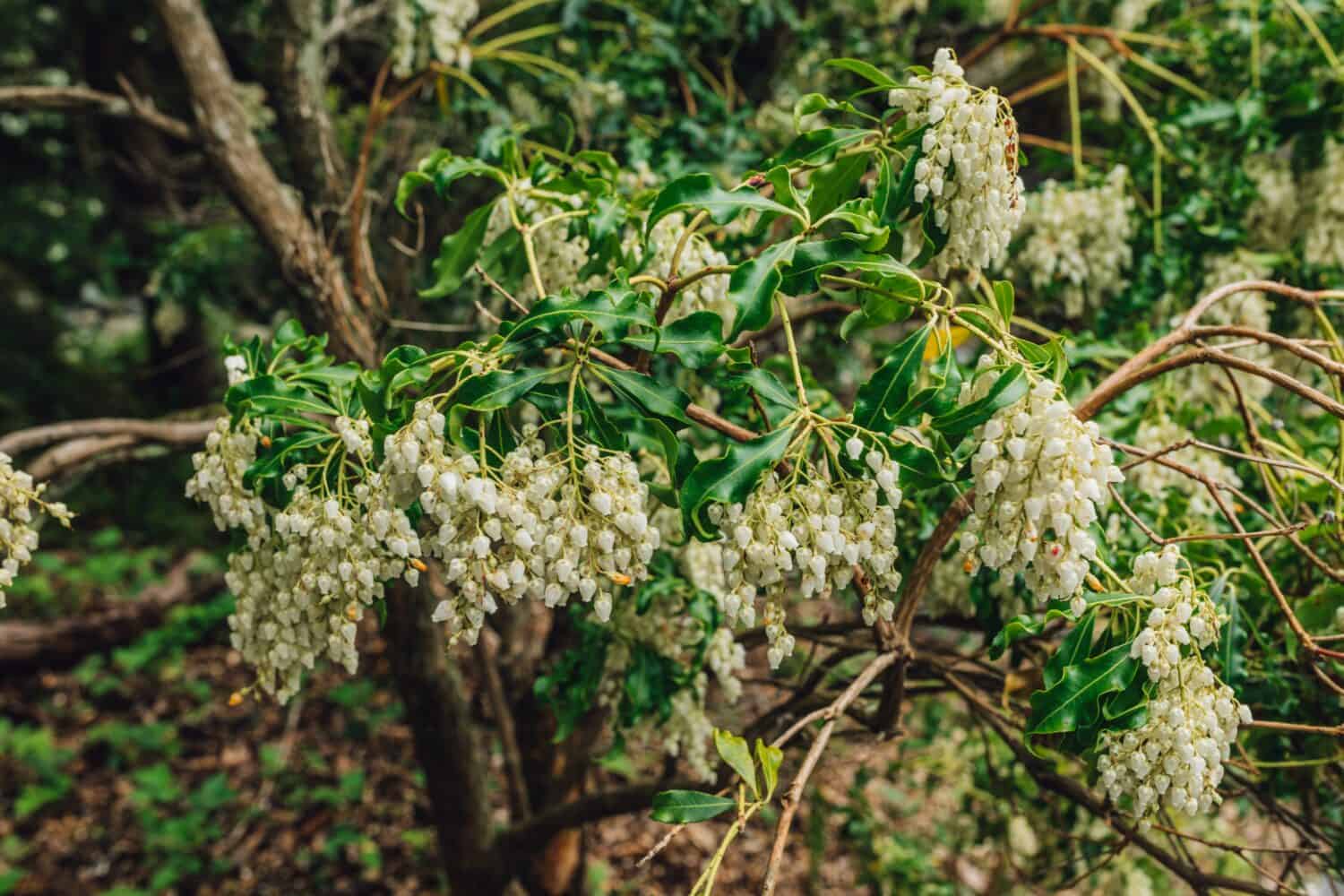
The Japanese Pieris plant (
Pieris japonica) is also known as “Japanese Andromeda”.
©Nicole Kandi/Shutterstock.com
This winter-blooming shrub is sure to add a unique sense of whimsy for a few short weeks to your winter garden. Its pendulous, bell-shaped blooms droop from its dark evergreen leaves. Expect to see this breathtaking sight from late winter to early spring in zones 4-8.
10. Winterberry Holly
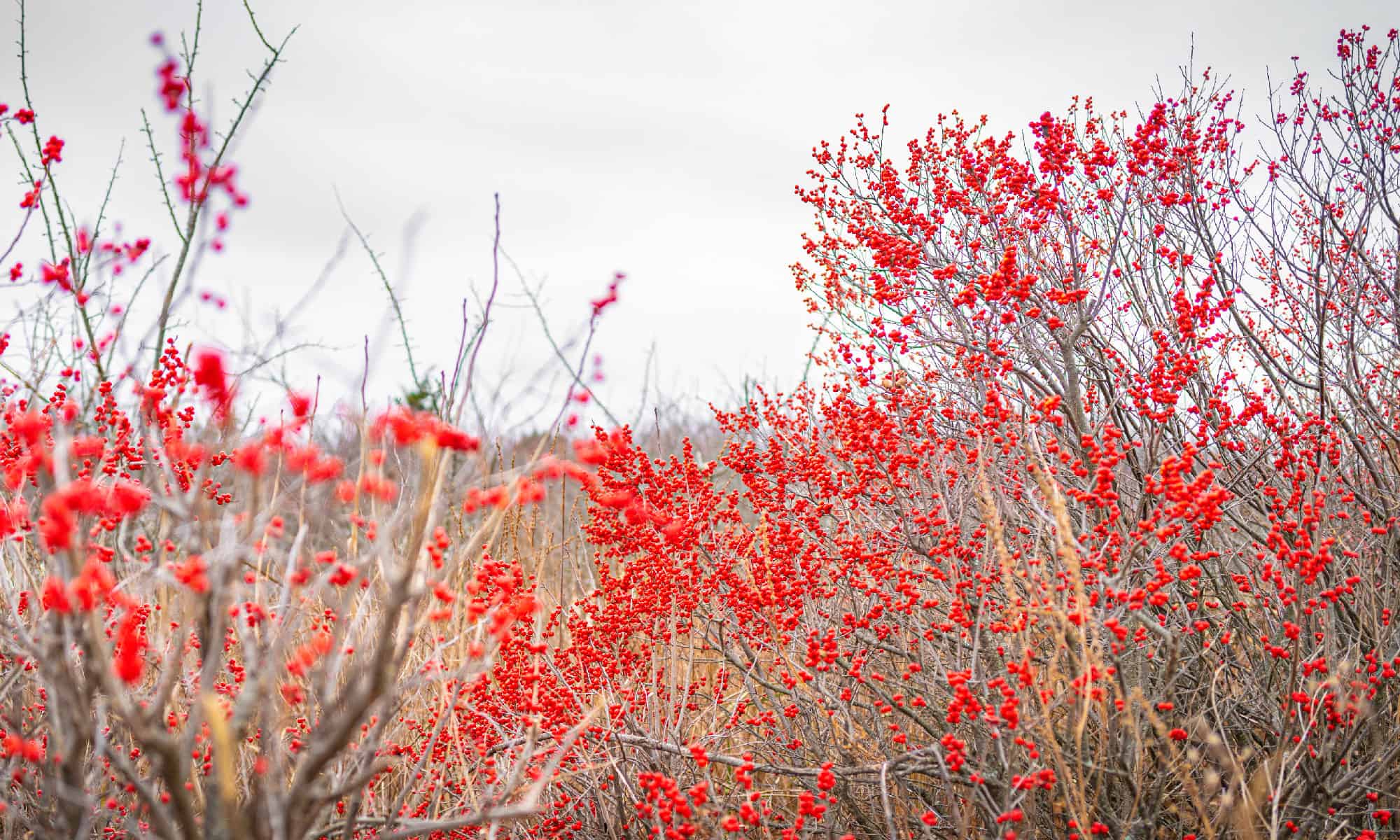
Winterberry holly branches can be cut off and added to winter flower arrangements.
©iStock.com/Sanghwan Kim
Like most other holly trees, the winterberry holly has dark glossy leaves and small berries. However, it’s not an evergreen. Though it flowers in the summer, the flowers are not what this plant is grown for. Once the leaves have all dropped in the fall, winterberry holly shows off the fruits of its labor during the winter months. Bright red berries adorn the tree and make it a wonderful winter spectacle.
You can grow this plant in zones 3-9, though you might have to wait a few years for it to produce its show of berries.
11. Witch Hazel
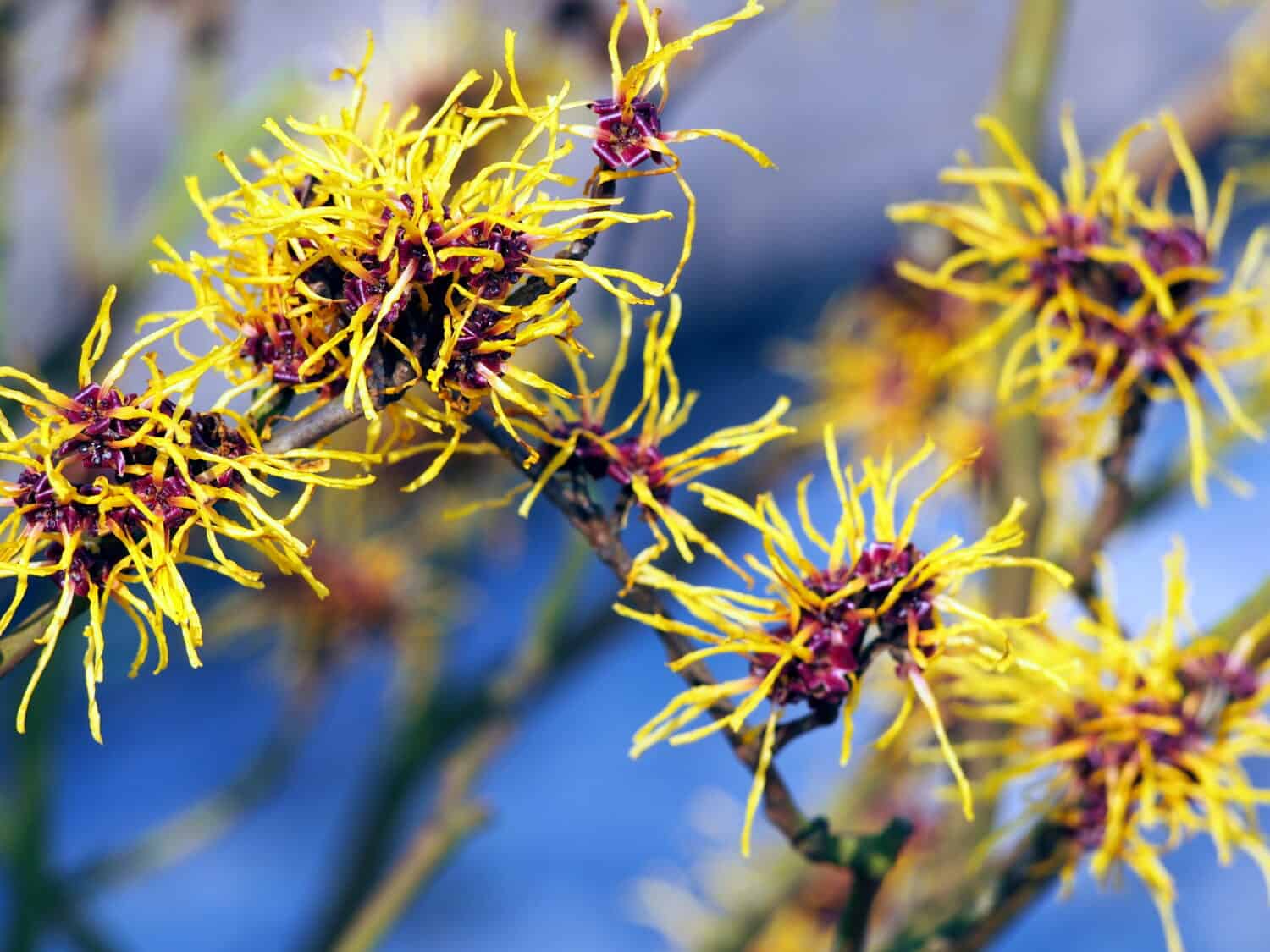
The tannins from witch hazel plants have historical use in treating minor skin conditions.
©Anna Gratys/Shutterstock.com
Different species of witch hazel will bloom at different times. The American witch hazel, Hamamelis virginiana, blooms from October to December in zones 4-8. A later blooming species, Hamamelis japonica, has a bloom time ranging from January to March. If you’re a big fan of the bright and odd blooms witch hazel produces, then you might consider planting both types to have some blooming shrubs in your garden for half of the year!
12. Sweet Box Sarcoccoca
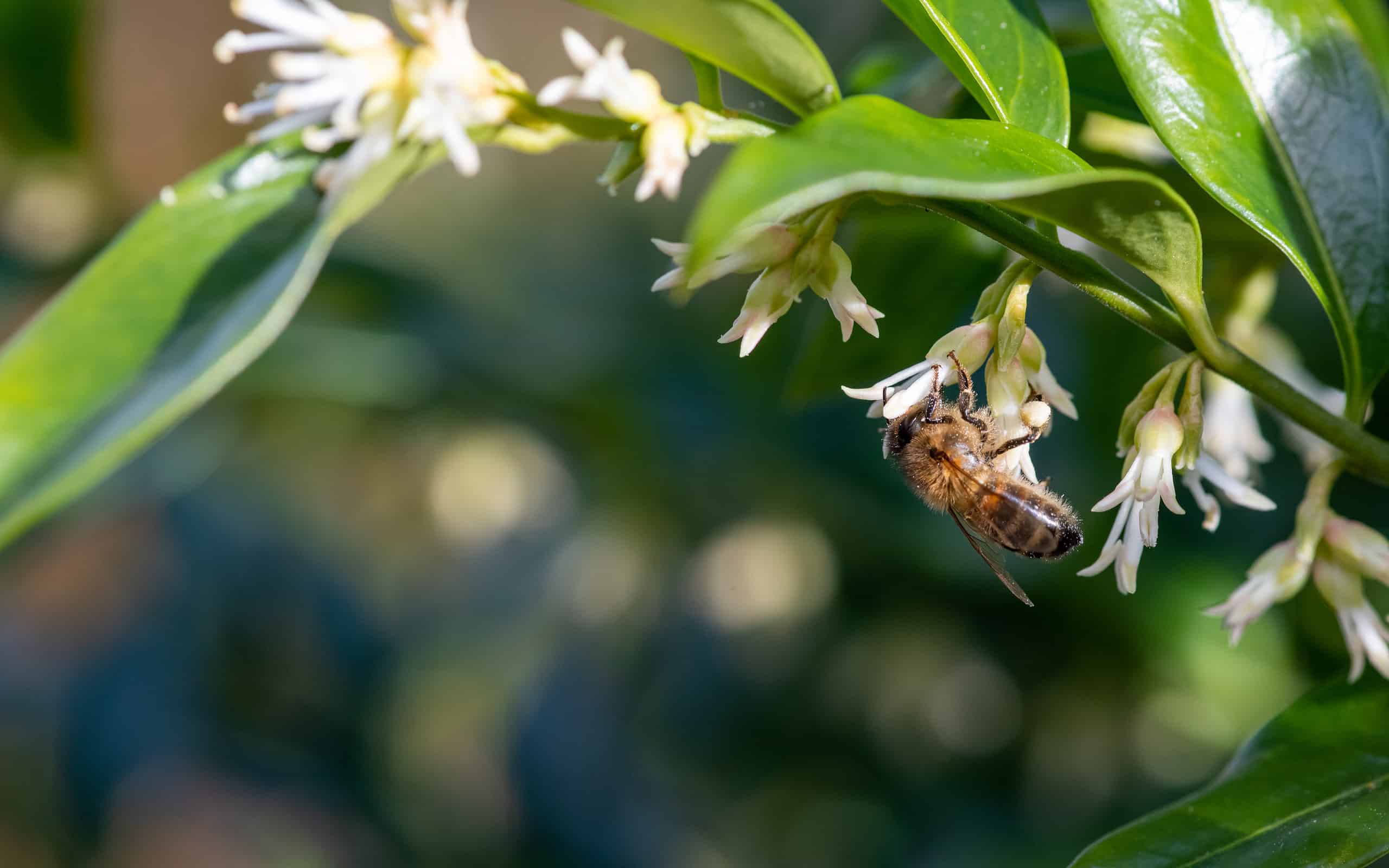
Expect these dainty white flowers to appear on your shrub in late winter to early spring.
©Tom Meaker/ via Getty Images
This relative of the boxwood plant takes some of the evergreen shrubs’ best features and adds in tiny, scented flowers. The blooms have a vanilla fragrance which fills the air around them. Sarcoccoca confusa is one of the more highly scented varieties of winter-blooming shrubs. Members of the Sarcoccoca family can be grown in shady areas and are winter hardy in zones 7-9.
Thank you for reading! Have some feedback for us? Contact the AZ Animals editorial team.








